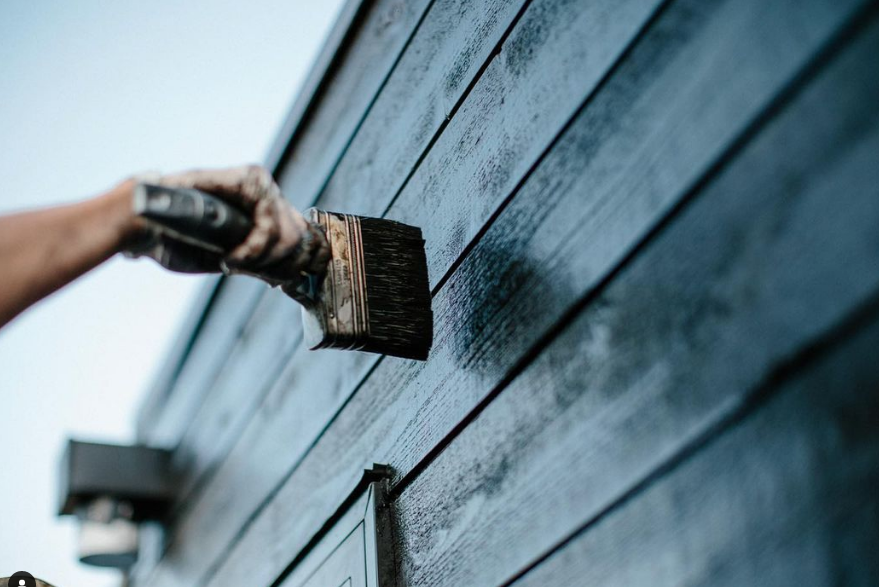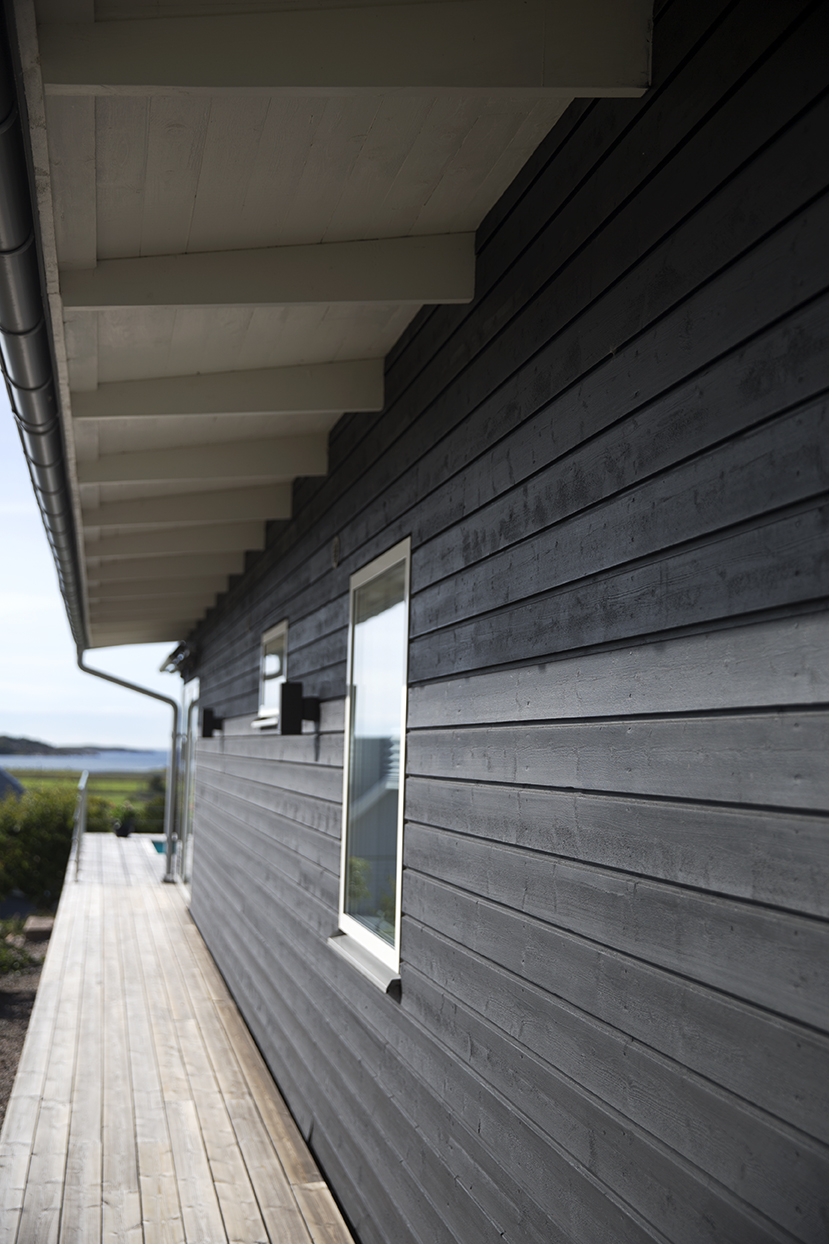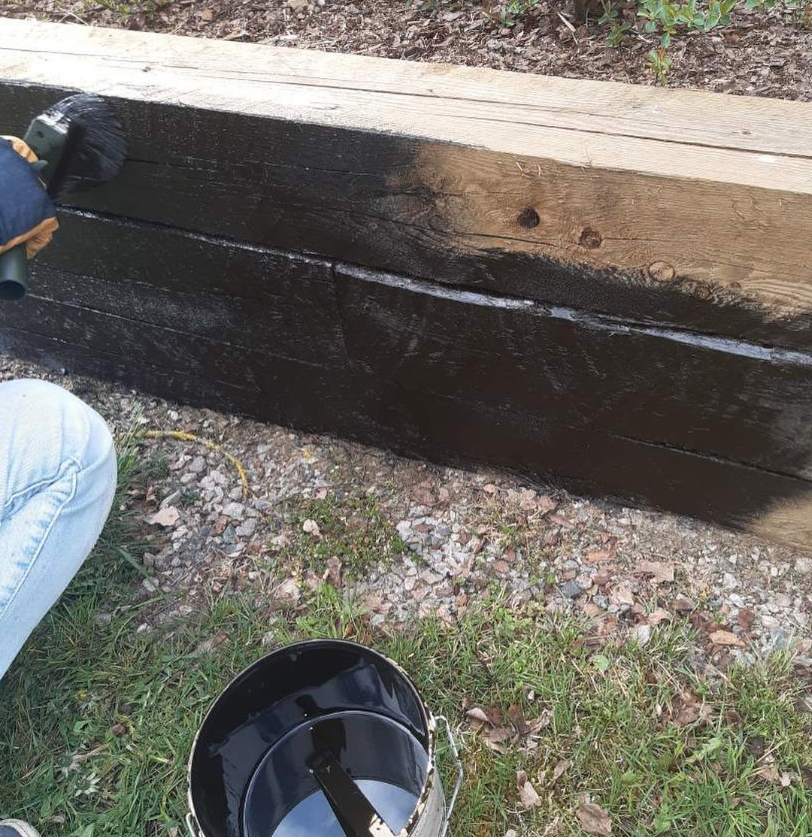Painting Guide
Painting your house with nature’s own pine tar paint is an experience. The characteristic smell gives you the feeling of working with nature itself. The colors are ideal for all outdoor wooden constructions, there among facades and fences. If your house is already painted with distemper, you can use pine tar paint directly on that surface.
Hands-on tips
Painting your house with pine tar paint is an experience. Listed below are some hands-on tips on how to use what we refer to as nature’s own paint.
NATURE’S OWN PAINT
Pine tar paint is a natural product. Using it leads to a stylish, durable and beautiful result. Painting with pine tar, you provide the wood with natural protection from whatever the weather brings as well as from mold and other nasty things. In addition, pine tar keeps the wood from drying out. Wood painted with pine tar lasts a long time with no need to repaint.
Pine tar paint from Auson comes in a number of colors. They all have in common that they come straight from nature.
Pine tar paints from Auson consist of pine tar, turpentine and color pigments – nothing else. The tar protects and strengthens the wood, while also yielding a matte, beautiful color. Use pine tar paint for your facade – and for your roof, fence, porch, jetty and other wooden constructions outdoors. Pine tar paint has a characteristic scent that stays for about a month after painting. The scent is more noticeable the very first days after painting.
PINE TAR COMES FROM NATURE
Pine tar paint is a natural product. Because of this, the hue may vary slightly depending on the date we made the paint. See label on lid. If you have cans with different dates, you should mix them with each other to avoid hue differences. For black pine tar paint, you do not need to think about this.
Always stir well before painting, since the color pigment gathers near the bottom during storage. Stir regularly while painting, too. This is particularly important for the pine tar vitriol, as it’s thinner than the other pine tar paints and therefore needs more frequent stirring. Otherwise the color pigment will gather at the bottom and you will end up with an uneven color on your façade.

BEFORE YOU PAINT
The pigmented pine tar needs to be diluted before used on unplanned wood with 20% Gum turpentine and linseed oil. For planed wood, and also if you intend to spray paint, we recommend to dilute with 30 – 40% gum turpentine and linseed oil.. You can also do your own test of dilution ratios depending on the finishing look you will like to achieve.
Please note that Pine Tar Vitriol already contains gum turpentine and needs no further dilution.
Pine tar paint must always be thin enough to be applied with a brush in thin layers. Thick layers may cause cracks in the surface with time.
A huge advantage of pine tar is that no primer is needed. It’s important to remove algae and mildew and make sure that the wood is dry before you start painting. Wood surfaces that have already been treated with our pine tars only need to be cleaned of dirt and dust. A wire brush should be used on wood that has previously been distemper painted to get rid of any flaking paint. Finish off by brushing the entire surface with a softer brush or broom.
It might also be a good idea to check the weather forecast when planning your painting. We recommend that you paint in warmer weather, at least 50°F. This makes the tar thinner, and it’s more easily absorbed into the surface.

WHEN YOU PAINT
Use a wide brush, approximately 70–100 millimeters. Paint as you would with a regular paint and avoid applying too thick layers. Be sure to stir well before painting, since the color pigment tends to gather near the bottom during storage. Repeat this continuously while painting. This is especially important when it comes to pine tar vitriol, which is thinner than the other pine tar paints and therefore needs more frequent stirring. Failure to do this may give your facade an uneven hue. Remember to paint the end parts of the wood as well.
Paint twice, if the wood has not been treated before. Otherwise once is enough. Please note that very dried-out and porous wood may need two to three times more paint.
Coverage
- For Red Pine Tar and Black Pine Tar, 5–8 m2 /liter depending on the surface. (This ratio is for mixture already diluted)
- For Pine Tar Vitriol, 6–10 m2/liter, depending on the surface.
AFTER YOU HAVE PAINTED
We recommend that you paint again after 5 to 10 years. On sides where the wood is not as exposed to the elements of nature, you can wait much longer. This variation simply has to do with things like weather, wind, wood quality and where you live. The intervals between paintings grow gradually longer the more times you apply pine tar paint. The tar strengthens and protects the previous layers.


